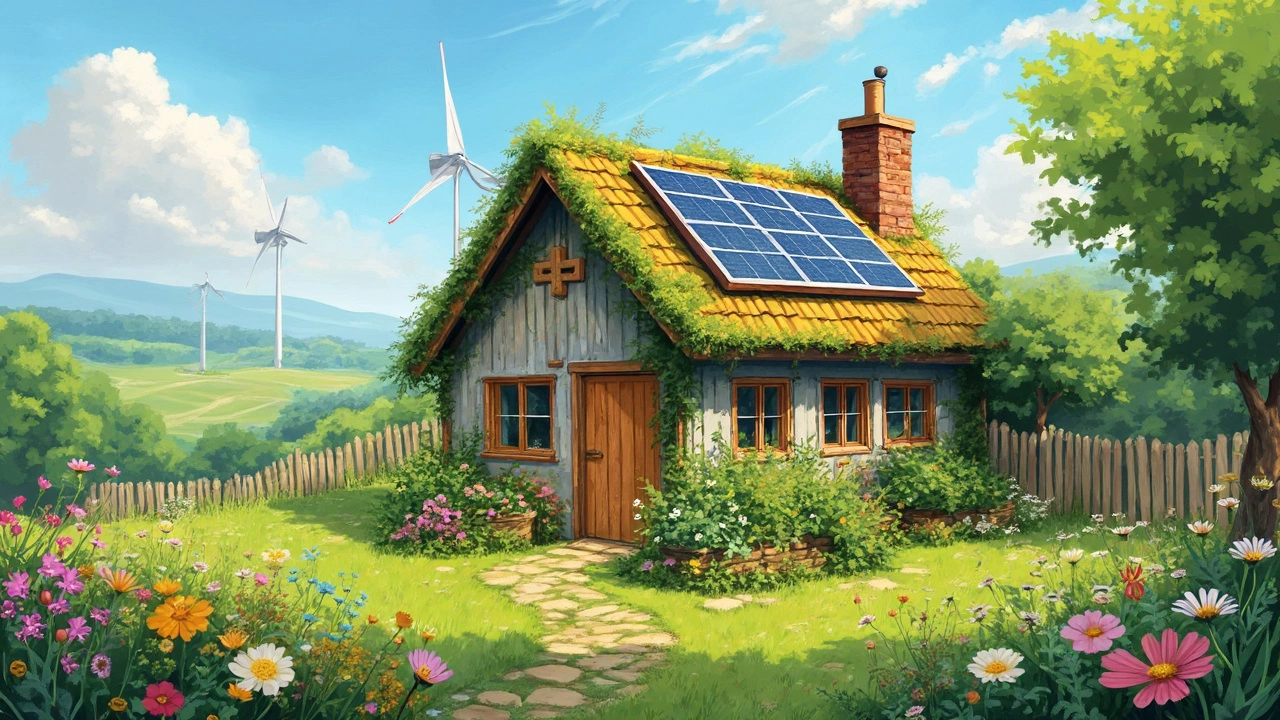It's crazy but true that even in 2025, some places are still struggling with being eco-friendly. So, which state takes the unfortunate crown of being the least environmentally friendly? Brace yourself. It's Texas. With its massive energy consumption, dependence on fossil fuels, and waste generation, Texas really pulls far from the clean and green track.
So why is Texas in this situation? It's not just one thing. Between the sprawling cities, extensive transportation networks, and that love for big everything, the carbon footprint here is sky high. To make matters worse, the state has been slow in jumping onto the renewable energy bandwagon compared to others, despite having tons of sunshine.
- Identifying the Least Green State
- Factors Contributing to Environmental Impact
- Eco-Friendly Cottages as a Solution
- Practical Tips for Sustainability
Identifying the Least Green State
The title of the least environmentally friendly state often pops up with Texas. But you might be wondering, why choose Texas when other places seem just as troubled? Well, the numbers tell the story. Texas, home to big skies and even bigger pollution issues, holds the top spot not mainly because of its size but due to its environmental impact.
When we talk about environmental impact, we're looking at factors like energy consumption, carbon footprint, and waste output. Texas, for instance, consumes more electricity than any other state, thanks largely to its hot climate and industrial activities. Yep, everything's bigger in Texas, including the energy bills!
Plus, Texas has a fondness for fossil fuels. Despite having plenty of sunshine, the renewable shift has been somewhat slow. Take a glance at emissions records, and you’ll notice Texas ranks high on oil and gas production, which isn't doing the planet any favors.
The waste factor is another big issue. With millions of residents, Texas produces a mountain of waste annually. The recycling rate here isn't the best either, which adds up to significant landfill contributions.
Here's a peek at Texas' environmental standing compared to the national average:
| Category | Texas | National Average |
|---|---|---|
| Energy Consumption (trillion BTUs) | 11,000 | 2,500 |
| Carbon Emissions (Million Metric Tons) | 650 | 350 |
| Recycling Rate (%) | 13 | 34 |
As you can see, Texas has room for improvement. Other states have progressed faster with greener policies and tech. It's crucial for Texas to tap into its potential for solar and wind energy, which are abundant but not fully utilized.
Factors Contributing to Environmental Impact
So, why is Texas falling behind in the environmental impact race? Let's break it down. First up, energy consumption. Texas is a giant when it comes to energy, and not in a good way. With its vast size and growing industries, this state relies heavily on oil and gas. Yep, those are the same fossil fuels that cause all sorts of pollution.
Now, let’s talk about waste management. Big cities like Houston and Dallas produce tons of waste, literally. It's not just about garbage trucks hauling off heaps every day. The recycling rates are pretty low compared to greener states. This adds up to more waste ending up in landfills, contributing to greenhouse gases.
Transportation is another kicker. Texas, with its love for wide-open spaces, means everyone's driving everywhere. And you guessed it, more cars mean more emissions. The state hasn’t fully embraced public transport, which could help cut down on all that smog.
What about renewable energy? Texas has the natural resources for solar and wind power. But here's the rub: the transition has been slow. Sure, there’s some progress, but not enough to flip the script in a meaningful way.
In summary, Texas has its work cut out. It’s going to take big changes in energy use, waste management, transportation, and embracing renewable options to shake off its least eco-friendly status. So, what can be done? Keep reading for ways to make your life greener and get some insider tips on eco-friendly cottages that could be part of the solution!

Eco-Friendly Cottages as a Solution
Alright, time to talk solutions. One way to tackle the environmental impact is through eco-friendly cottages. These little homes pack a punch when it comes to reducing our carbon footprint and helping states like Texas become more sustainable.
The concept is simple: build or retrofit cottages to be as green as possible. Think sustainability tips like using solar panels for energy, rainwater collection systems, and composting toilets. These ensure minimal impact on natural resources.
Here's why they're game-changers:
- Energy Efficiency: By installing solar panels and using natural lighting, these cottages drastically cut down on energy consumption. It's all about letting the sun do most of the work.
- Sustainable Materials: Using recycled and environmentally friendly materials in construction helps reduce waste. Bamboo floors anyone?
- Water Conservation: Rainwater harvesting, combined with efficient plumbing, keeps water use low—not a drop wasted.
An added bonus? They’re not just good for the Earth; they can be lighter on your wallet. Sure, there might be some upfront costs, but over time, saving on energy bills is a total win.
And guess what? Steady growth in eco-friendly cottage communities shows they’re not just a hippie dream. In larger states like Texas, where sprawling suburbs rule, shifting towards such housing options could mean big changes.
By incorporating eco-friendly cottages, residents can take a proactive role in transforming Texas from an environmental dud to a green dream. It's a matter of changing mindsets and making everyday choices that add up in a big way.
Practical Tips for Sustainability
Living in a state that struggles with being environmentally friendly can be frustrating, but there's plenty you can do to help out! Let's break down some straightforward tips to live greener, even in places like Texas.
First off, think about how you're using energy. Switching to energy-saving appliances can really make a dent in your carbon footprint. Look for those nifty Energy Star labels when you're shopping. If you're a homeowner, consider investing in solar panels. Yes, it's a bit of an upfront cost, but Texas gets a ton of sun, so it's almost a no-brainer!
Transportation is a biggie, too. Carpooling might sound a bit old-school, but it helps cut down on emissions. Public transit is another option, but if that's not feasible, how about an e-bike for your short trips?
Waste reduction is another area where small changes can lead to big results. Start with basics like recycling and composting. If you're feeling adventurous, try a zero-waste challenge. Sounds tough, but it's doable with some effort.
When it comes to eco-friendly cottages, they can be part of the solution. If you're building or remodeling, use sustainable materials like reclaimed wood or bamboo. On top of that, incorporate smart tech to monitor and reduce energy use.
Don't underestimate the power of community. Join or start a local environmental group to tackle larger projects. Whether it's organizing neighborhood clean-ups or advocating for more bike paths, it all adds up toward making a difference.
| Actions | Impact |
|---|---|
| Switch to LED lighting | Reduce energy consumption by 75% |
| Install low-flow faucets | Save up to 700 gallons of water yearly |
Every little bit helps, right? Together, we can make our states cleaner and greener, one step at a time.
